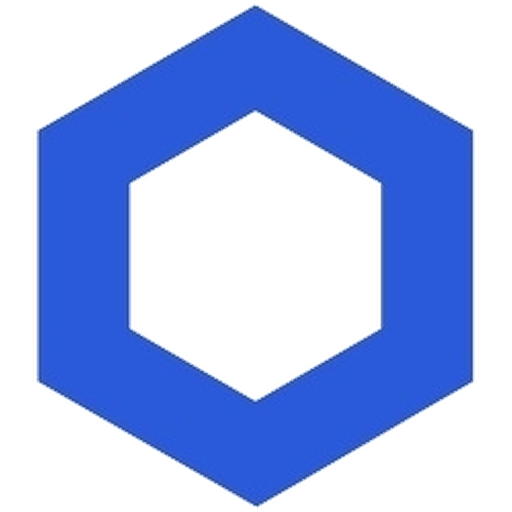Chainlink vs Goldfinch – Price, Market Cap & Performance Compared
Which coin performs better – Chainlink or Goldfinch?
We compare the current price (21.65 $ vs 1.19 $), market cap (14 681 284 504 vs 110 309 339) and all-time high (52.7 vs 32.94).
Find out which one stands out right now!
Chainlink is currently trading at 21.65 $, while Goldfinch stands at 1.19 $. These cryptocurrencies differ not only in price but also in market presence.
The market cap of Chainlink is around 14 681 284 504, and Goldfinch has about 110 309 339. Their respective all-time highs are 52.7 for Chainlink and 32.94 for Goldfinch.
Daily trading volume and the 24h price change (0.393 % vs 38.25698 %) also offer key insights.
Compare all metrics now and see which coin fits your investment strategy best!
Chainlink
Chainlink is a decentralized oracle network that plays a crucial role in enabling smart contracts to interact with real-world data. By providing reliable and tamper-proof inputs and outputs, it enhances the capabilities of blockchain applications across various industries. Its innovative approach to bridging on-chain and off-chain environments is transforming how projects build secure and efficient decentralized solutions.
more informationGoldfinch
Goldfinch is an innovative decentralized finance project aimed at bridging the gap between traditional finance and the world of cryptocurrency. By providing underbanked communities access to loans, it not only promotes financial inclusion but also opens up unique investment opportunities for crypto enthusiasts. The platform's focus on real-world assets distinguishes it in the crypto space, highlighting the potential for sustainable growth.
more information

|

|
|
|
|
General Information |
|
|---|---|
|
Title
Chainlink
|
Title
Goldfinch
|
|
Symbol
link
|
Symbol
gfi
|
|
Whitepaper
-
|
Whitepaper
-
|
|
Website
|
Website
-
|
|
Community
-
|
Community
-
|
|
Last Updated
2025-09-24 23:29
|
Last Updated
2025-05-10 15:28
|
Price Data |
|
|---|---|
|
Current Price $
21.65 $
|
Current Price $
1.19 $
|
|
High 24h
21.96 $
|
High 24h
1.19 $
|
|
Low 24h
21.18 $
|
Low 24h
0.84984 $
|
|
Price Change 24h
0.08476 $
|
Price Change 24h
0.32878 $
|
|
Price Change % 24h
0.393 %
|
Price Change % 24h
38.25698 %
|
Market Data |
|
|---|---|
|
Market Cap
14 681 284 504
|
Market Cap
110 309 339
|
|
Total Volume
809 256 816
|
Total Volume
2 497 193
|
|
Market Cap Change 24h
7 335 658
|
Market Cap Change 24h
30 701 319
|
|
Market Cap Change % 24h
0.04999 %
|
Market Cap Change % 24h
38.56561 %
|
|
Return on Investment (ROI)
-
|
Return on Investment (ROI)
-
|
Supply and Availability |
|
|---|---|
|
Circulating Supply
678 099 970
|
Circulating Supply
92 705 739
|
|
Total Supply
1 000 000 000
|
Total Supply
114 285 714
|
|
Max Supply
1 000 000 000
|
Max Supply
114 285 714
|
Historical Data |
|
|---|---|
|
All Time High (ATH)
52.7
|
All Time High (ATH)
32.94
|
|
ATH Change %
-58.90503 %
|
ATH Change %
-96.53232 %
|
|
ATH Date
2021-05-10 00:13
|
ATH Date
2022-01-11 21:23
|
|
All Time Low (ATL)
0.14818
|
All Time Low (ATL)
0.29024
|
|
ATL Change %
14 514 %
|
ATL Change %
293.51021 %
|
|
ATL Date
2017-11-29 00:00
|
ATL Date
2023-06-19 16:10
|
Chainlink
Introduction to Chainlink: A Bridge Between Blockchain and Real-World Data
Chainlink, often recognized by its ticker symbol LINK, is a decentralized oracle network that plays a crucial role in enhancing blockchain functionality by enabling smart contracts to interact with real-world data. This capability is foundational for the proliferation of decentralized applications (dApps) that require access to external data, such as weather reports, stock prices, or other APIs to execute their complex functions.
The Evolution of Chainlink: Historical Performance and Milestones
Chainlink has come a long way since its inception. Its initial coin offering (ICO) in 2017 set the stage for the robust journey ahead. The oracle provider became especially significant during the DeFi boom, establishing itself as a key infrastructure component in the blockchain ecosystem. Chainlink achieved its all-time high of $52.70 in May 2021, reflecting the growing demand and trust in its technology during the rapid growth of decentralized finance.
Despite market fluctuations and the recent decrease of about 78.44% from its ATH, Chainlink has maintained resilience. As of the latest update, LINK is priced at $11.33, showing substantial recovery despite previous market downturns.
The Strengths of Chainlink: Bridging the Gap Effectively
One of Chainlink's main advantages is its ability to securely connect blockchain networks with off-chain data through its decentralized oracle services. This feature significantly boosts the capability of smart contracts, empowering them with real-world data inputs and outputs.
Chainlink’s robustness lies in its decentralization, which reduces vulnerabilities associated with centralized oracle solutions. By incentivizing a network of nodes to reliably provide data, it mitigates the risks linked to single points of failure. Furthermore, the wide adoption of Chainlink across various blockchain projects attests to its reliability and relevance in the market.
Potential Drawbacks of Chainlink: Challenges Ahead
Despite its incredible strengths, Chainlink does face certain challenges. The competition within the oracle space is increasing, with new projects launching services that aim to improve on or offer alternative solutions. Moreover, the dependency of DeFi projects on Chainlink can be seen as a double-edged sword, making network updates and more crucial for maintaining the trust and functionality within the ecosystem.
Additionally, Chainlink must continue to manage its growth effectively to avoid bottlenecks and centralization in its node operations, which could undermine the decentralization ethos it champions.
Future Prospects for Chainlink: What Lies Ahead?
The future of Chainlink seems promising, driven by ongoing developments in Web3, decentralized finance, and cross-chain interoperability. The continuous innovation and upgrading of the Chainlink protocol will likely enhance its integration capabilities and maintain its position as a leader in the oracle sector.
As the demand for reliable and secure data channels increases, so too should the utilization and impact of Chainlink's services. Its collaborations with various blockchains to create a more connected and data-enriched ecosystem underpin a positive outlook for its sustained growth and adoption.
In conclusion, Chainlink stands strong as a vital component in the cryptocurrency ecosystem, with prospects that continue to shine brightly as advancements in blockchain technology unfold.
Goldfinch
Understanding Goldfinch: A Comprehensive Overview
Goldfinch (GFI) is a promising player in the decentralized finance (DeFi) space, focused on providing accessible loans for underserved markets. Launched in early 2021, Goldfinch aims to bridge the gap between traditional finance and the blockchain ecosystem, making it an interesting project for investors and users alike. In this article, we will delve into the historical performance of the coin, examine its advantages and disadvantages, and explore future outlooks.
Historical Price Performance
Goldfinch experienced a meteoric rise after its launch, reaching an all-time high (ATH) of $32.94 on January 11, 2022. This surge was fueled by the growing interest in DeFi solutions and the project's unique approach to lending. However, like many cryptocurrencies, GFI could not escape the market downturns that followed its peak, leading to a significant depreciation. As of October 2023, GFI is priced at approximately $1.60, marking a staggering decline of over 95% from its ATH.
Despite this decline, GFI has shown signs of recovery, with a strong price change of approximately 34.90% in the last 24 hours. This indicates that, despite market volatility, there are opportunities for trading and investment.
Advantages of Goldfinch
Goldfinch has several compelling advantages that make it stand out in the crowded DeFi landscape:
- Access to Underserved Markets: The platform focuses on providing loans to borrowers who do not have access to traditional banking services, thereby increasing financial inclusion.
- Robust Ecosystem: The Goldfinch protocol allows for decentralized risk assessment, enabling backers to fund loans while diversifying their risk levels.
- Community Governance: As a decentralized project, holders of GFI tokens have a say in future developments and changes, promoting a sense of ownership and trust among users.
Disadvantages of Goldfinch
While Goldfinch has promising aspects, it also faces challenges that potential investors should consider:
- Market Volatility: Like most cryptocurrencies, GFI is susceptible to significant price fluctuations, which can pose risks for investors.
- Competition: The DeFi space is crowded, with numerous platforms offering similar services. This competition may hinder Goldfinch's growth potential.
- Regulatory Risks: As the regulatory landscape surrounding cryptocurrencies continues to evolve, Goldfinch may face challenges that could affect its operations and growth.
Future Outlook for Goldfinch
The future prospects for Goldfinch appear cautiously optimistic. As the demand for decentralized financial solutions grows, projects like Goldfinch that address real-world problems are likely to gain traction. The focus on lending in underserved markets positions Goldfinch as a unique player in the space, capturing interest from both investors and borrowers.
However, the long-term success of Goldfinch will depend on its ability to navigate the competitive DeFi landscape and adapt to potential regulatory challenges. Continued innovation, user engagement, and transparency will be crucial for sustaining growth and rebuilding investor confidence.
Conclusion
Goldfinch demonstrates the potential of decentralized finance to transform traditional lending practices. Despite the considerable challenges it faces, its unique value proposition and recent price recovery may signal a positive trajectory for the future. Investors and users alike should keep an eye on GFI as it continues to develop and evolve in a rapidly changing cryptocurrency market.
For more information, visit the official website at goldfinch.finance.

